Lectures
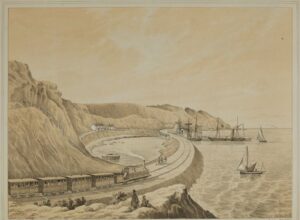
White Head – history of our economic geology
Tuesday 16th December 2025
Talk by Ian Enlander
Time 7pm
Venue Zoom
Before the town of Whitehead came into existence, there were a number of flourishing industries in the vicinity of White Head, the limestone headland that once stood south of the present town. These industries used the local geology as their raw material.
The local geology – red, white and black – mainly consists of Triassic mudstones (red), being the oldest rocks present, succeeded by the Cretaceous series, notably the Ulster White Limestone (white), capped by the Lower Basalts (black). Using field evidence together with a range of historical sources, the story of how these raw materials formed the basis of an important series of industries will be discussed. The area flourished during the heyday of ‘Victorian industrialisation’ with the coming of the railway, a better road network and development of harbour facilities.
Although the quarries, brickworks and harbour are now quiet and the evidence mostly long gone, the story of these industries and associated activities can be understood through historical maps, postcards, photographs and artwork. This small area hosts a lot of industrial heritage.
Ian Enlander
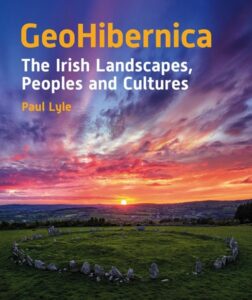
GeoHibernica:The Irish Landscapes,its peoples and cultures
Monday 1st December 2025
Talk by Paul Lyle PhD
Time 6.30 for 7.00pm
Venue McArthur Hall ,MCB,Belfast
GeoHibernica: The Irish Landscapes, Peoples and Cultures explores the profound relationship between Ireland’s diverse geological foundations and the societies that have shaped – and been shaped by – its landscape over millennia. From the first settlers who arrived around 10,000 years ago to the present day, Ireland’s varied bedrock, revealed as the Ice Age retreated, has provided both the physical and cultural framework for human habitation. As the population expanded from the Neolithic through the Bronze and Iron Ages, the transition from hunter-gatherer communities to agricultural societies reshaped both the land and its people. The clearance of ancient forests and the growth of vast peat bogs brought about cultural transformations whose echoes remain visible today.
This book examines how Ireland’s landscape has inspired both practical and artistic responses – from megalithic tombs and high crosses to the vernacular architecture that reflects deep connections to place. In the late nineteenth and early twentieth centuries, artists like Paul Henry helped define an enduring vision of Ireland, while naturalists such as Robert Lloyd Praeger and cultural geographers like Estyn Evans deepened our understanding of how land, heritage and history intertwine.
GeoHibernica offers a holistic exploration of how Ireland’s physical landscape has continuously shaped its cultural identity across the ages.
Paul Lyle graduated from the Queen’s University of Belfast with a BSc in Geology, followed by a PhD. He then took up a post as Lecturer in Geology at Ulster University where his research interests centred on the Antrim Lava Group, particularly those of the Giant’s Causeway.
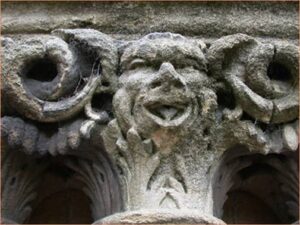
Rock Solid: A Geological Perspective on our Stone- built Heritage
Monday 17th November 2025
Talk by Joanne Curran
Time 6.45 pm for 7.00 pm
Venue MCB McArthur Hall and Zoom
Rock Solid: A Geological Perspective on our Stone-built Heritage
This presentation explores the connection between Ireland’s geological foundation and its architectural heritage. It will examine how knowledge of rock properties was an essential skill for architects and builders in the 19th and 20th centuries. The talk will also address current challenges in selecting appropriate stone materials for both new construction projects and the conservation of historic buildings.
Joanne Curran, PhD, BSc (Hons)
Associate, Consarc Design Group
Geologist
Biography:
Joanne studied Geology at the University of Edinburgh and awarded a PhD from Queen’s University Belfast in 1995. Joanne joined Consarc Design Group in 2001 from a research position at Queen’s University Belfast to develop a research-industry partnership and set up a specialist advisory service for the conservation of masonry materials.
She also led the ‘Natural Stone Database for NI’ a research project funded by EU to record the condition of >2,000 listed buildings and monuments throughout NI and co-authored the book, ‘Stone by Stone: A Guide to Building Stone in the Northern Ireland Environment’.
Joanne’s is an associate in Consarc and her role is as project manager for a range of conservation projects throughout the UK and Ireland. She also provides specialist advice and materials testing and maintains research links with Queen’s University.
Joanne is the chair of the Institute of Historic Building Council in Northern Ireland – the professional body for building conservation practitioners. She trained in Rope Access for abseil for the survey of buildings and is a member of Mountaineering Ireland and Belfast Association of Rock Climbers and Fell Runners.
E-mail: joanne.curran@consarc-design.co.uk
Website: www.consarc-design.co.uk
www.stonedatabase.com
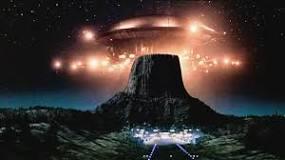
Close Encounters of the Third(Geological) Kind
Monday 20th Oct 2025
Talk by Stephen Thompson
6.30 for 7.00pm
Venue MCB
University Rd
Belfast
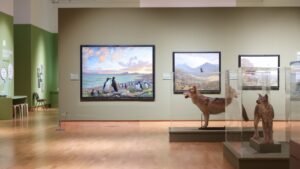
Wild Ireland: An exhibition at the Ulster Museum
Thursday 26th June, 10.45 a.m.
Meet in the entrance hall of the Ulster Museum.
A curator-led tour (by Mike Simms) of the exhibition (open until 31st August), showcasing 60 paintings by Julian Friars who worked in collaboration with Mike to explore the changing fortunes of some of Ireland’s wildlife, from long-extinct giant millipedes, through Ice Age ‘monsters’, to extant wildlife.

The mining heritage of County Antrim and its legacy
Monday 19th May
Talk by Kieran Parker BGS
6.30 for 7.00pm
Venue QUB Geography Dept ,Elmwood
Avenue,Belfast

White Head – history of our economic geology
Tuesday 16th December 2025
Talk by Ian Enlander
Time 7pm
Venue Zoom
Before the town of Whitehead came into existence, there were a number of flourishing industries in the vicinity of White Head, the limestone headland that once stood south of the present town. These industries used the local geology as their raw material.
The local geology – red, white and black – mainly consists of Triassic mudstones (red), being the oldest rocks present, succeeded by the Cretaceous series, notably the Ulster White Limestone (white), capped by the Lower Basalts (black). Using field evidence together with a range of historical sources, the story of how these raw materials formed the basis of an important series of industries will be discussed. The area flourished during the heyday of ‘Victorian industrialisation’ with the coming of the railway, a better road network and development of harbour facilities.
Although the quarries, brickworks and harbour are now quiet and the evidence mostly long gone, the story of these industries and associated activities can be understood through historical maps, postcards, photographs and artwork. This small area hosts a lot of industrial heritage.
Ian Enlander

GeoHibernica:The Irish Landscapes,its peoples and cultures
Monday 1st December 2025
Talk by Paul Lyle PhD
Time 6.30 for 7.00pm
Venue McArthur Hall ,MCB,Belfast
GeoHibernica: The Irish Landscapes, Peoples and Cultures explores the profound relationship between Ireland’s diverse geological foundations and the societies that have shaped – and been shaped by – its landscape over millennia. From the first settlers who arrived around 10,000 years ago to the present day, Ireland’s varied bedrock, revealed as the Ice Age retreated, has provided both the physical and cultural framework for human habitation. As the population expanded from the Neolithic through the Bronze and Iron Ages, the transition from hunter-gatherer communities to agricultural societies reshaped both the land and its people. The clearance of ancient forests and the growth of vast peat bogs brought about cultural transformations whose echoes remain visible today.
This book examines how Ireland’s landscape has inspired both practical and artistic responses – from megalithic tombs and high crosses to the vernacular architecture that reflects deep connections to place. In the late nineteenth and early twentieth centuries, artists like Paul Henry helped define an enduring vision of Ireland, while naturalists such as Robert Lloyd Praeger and cultural geographers like Estyn Evans deepened our understanding of how land, heritage and history intertwine.
GeoHibernica offers a holistic exploration of how Ireland’s physical landscape has continuously shaped its cultural identity across the ages.
Paul Lyle graduated from the Queen’s University of Belfast with a BSc in Geology, followed by a PhD. He then took up a post as Lecturer in Geology at Ulster University where his research interests centred on the Antrim Lava Group, particularly those of the Giant’s Causeway.

Rock Solid: A Geological Perspective on our Stone- built Heritage
Monday 17th November 2025
Talk by Joanne Curran
Time 6.45 pm for 7.00 pm
Venue MCB McArthur Hall and Zoom
Rock Solid: A Geological Perspective on our Stone-built Heritage
This presentation explores the connection between Ireland’s geological foundation and its architectural heritage. It will examine how knowledge of rock properties was an essential skill for architects and builders in the 19th and 20th centuries. The talk will also address current challenges in selecting appropriate stone materials for both new construction projects and the conservation of historic buildings.
Joanne Curran, PhD, BSc (Hons)
Associate, Consarc Design Group
Geologist
Biography:
Joanne studied Geology at the University of Edinburgh and awarded a PhD from Queen’s University Belfast in 1995. Joanne joined Consarc Design Group in 2001 from a research position at Queen’s University Belfast to develop a research-industry partnership and set up a specialist advisory service for the conservation of masonry materials.
She also led the ‘Natural Stone Database for NI’ a research project funded by EU to record the condition of >2,000 listed buildings and monuments throughout NI and co-authored the book, ‘Stone by Stone: A Guide to Building Stone in the Northern Ireland Environment’.
Joanne’s is an associate in Consarc and her role is as project manager for a range of conservation projects throughout the UK and Ireland. She also provides specialist advice and materials testing and maintains research links with Queen’s University.
Joanne is the chair of the Institute of Historic Building Council in Northern Ireland – the professional body for building conservation practitioners. She trained in Rope Access for abseil for the survey of buildings and is a member of Mountaineering Ireland and Belfast Association of Rock Climbers and Fell Runners.
E-mail: joanne.curran@consarc-design.co.uk
Website: www.consarc-design.co.uk
www.stonedatabase.com

Close Encounters of the Third(Geological) Kind
Monday 20th Oct 2025
Talk by Stephen Thompson
6.30 for 7.00pm
Venue MCB
University Rd
Belfast

Wild Ireland: An exhibition at the Ulster Museum
Thursday 26th June, 10.45 a.m.
Meet in the entrance hall of the Ulster Museum.
A curator-led tour (by Mike Simms) of the exhibition (open until 31st August), showcasing 60 paintings by Julian Friars who worked in collaboration with Mike to explore the changing fortunes of some of Ireland’s wildlife, from long-extinct giant millipedes, through Ice Age ‘monsters’, to extant wildlife.

The mining heritage of County Antrim and its legacy
Monday 19th May
Talk by Kieran Parker BGS
6.30 for 7.00pm
Venue QUB Geography Dept ,Elmwood
Avenue,Belfast
